Duckhorn Portfolio Wine Blog
Posts written by Neil Bernardi, Vice President of Winemaking and many special guest bloggers. This collection of insights on winemaking, farming, entertaining and more is a great way to learn about the excitement of winery life and tips for enjoying the wines we produce.
Bring Wine Country to Zoom with our Virtual Backgrounds
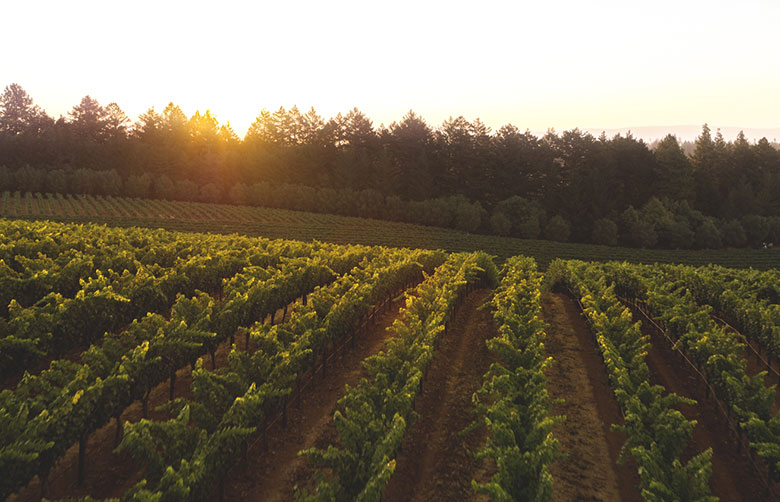
Wow your coworkers and virtual happy hour friends as you WFH (#WineFromHome) in style with wine country backgrounds! We're bringing the beauty of wine country to your at-home work station with views of some of our most picturesque winery estate vineyards, wine caves, and outdoor wine tasting spaces. So while you may not be able to join us in the tasting room or stroll our vineyards right now, you can download one of our wine country images below and WFH with a view!
How to add your wine country background on Zoom:
- Uncork your favorite bottle of wine. Running low? We can help you restock - shop here!
- Grab a glass, and and give yourself a pour.
- Scroll through the images below, select one and save to your desktop.
- Now head over to Zoom and log in (click here for a Zoom how-to video if you need a little help)
- Click the gear icon in the right-upper corner.
- Then click “virtual background” from the side bar on the left
- Next, click the plus-sign to upload the image. You are now in wine country!
- Finally, take a sip from your glass, you earned it
To help our team stay connected while working from home, we’ve added a 'fun fact' to share at the beginning of our virtual meetings. It can be anything – it acts as a little ice breaker to get everyone comfortable, especially for those early morning calls. We've equipped each image below with a little story to go with it, for any other groups doing the same!
From our flock to yours, please stay safe and stay home when possible. Cheers to at-home sips!
Go To: Duckhorn Vineyards | Paraduxx | Goldeneye | Canvasback | Calera
Duckhorn Vineyards
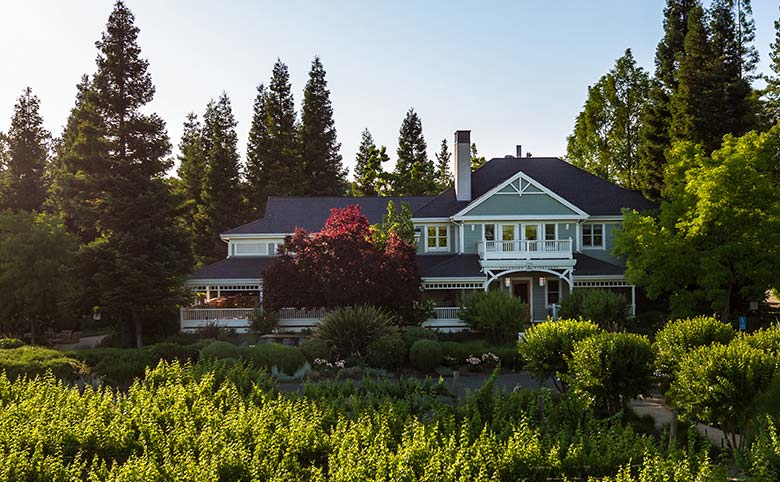
Duckhorn Vineyards in St. Helena was founded in 1976 by Dan & Margaret Duckhorn. They started with 800 cases of Napa Valley Merlot and 800 cases of Napa Valley Cabernet Sauvignon!
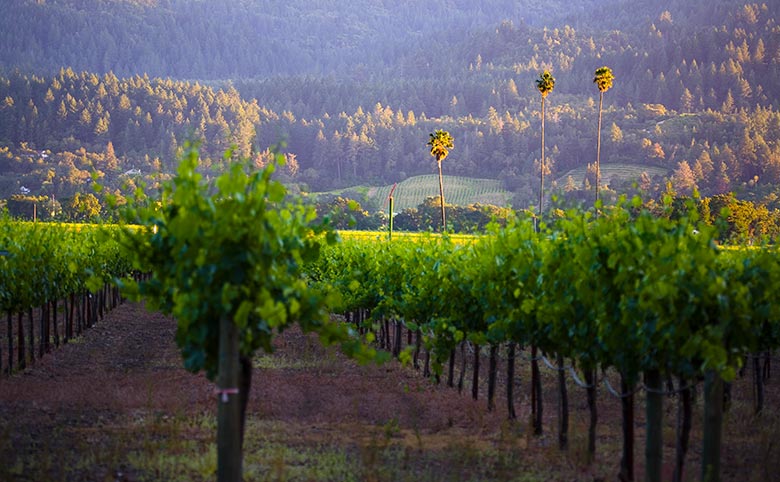
Three Palms Vineyard is an iconic site for new world Merlot! In fact, the 2014 Duckhorn Vineyards Napa Valley Merlot Three Palms Vineyard earned Wine Spectator’s #1 Wine of the Year.
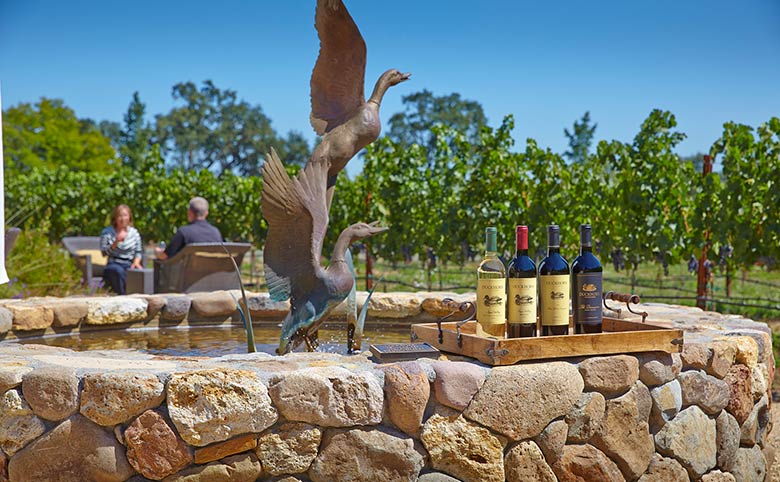
This Mallard Duck fountain was constructed with stones from every Duckhorn Estate Vinyeard. It commemorates our 35th harvest celebration!
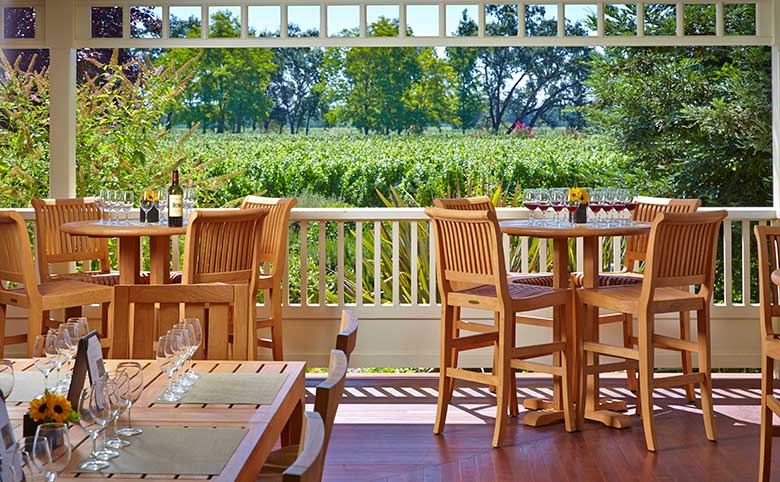
Our Duckhorn Vineyards veranda overlooks Marlee’s Garden, which is named after Margaret Duckhorn and is the perfect setting for wine tasting with a wine country view.
Paraduxx
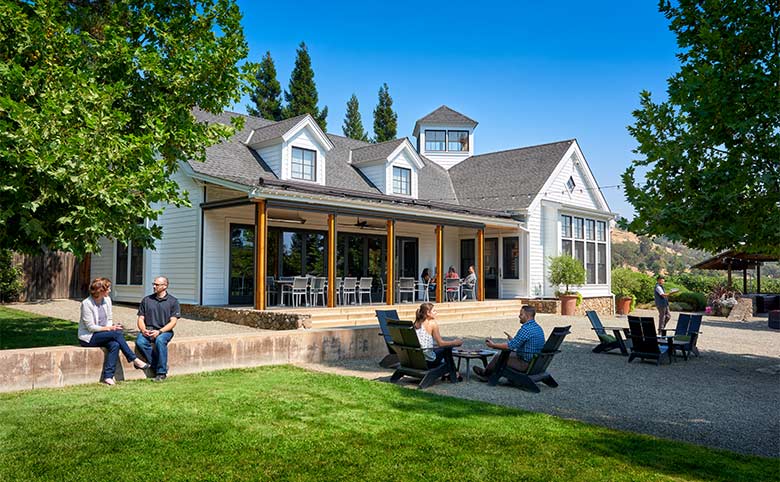
Paraduxx is our Napa Valley winery just south of Duckhorn Vineyards. and is dedicated to making Napa Valley blends inspired by the iconic blends of the world!
Goldeneye

Nestled in the Mendocino Coast, Goldeneye crafts terroir-driven Pinot Noir.
Canvasback
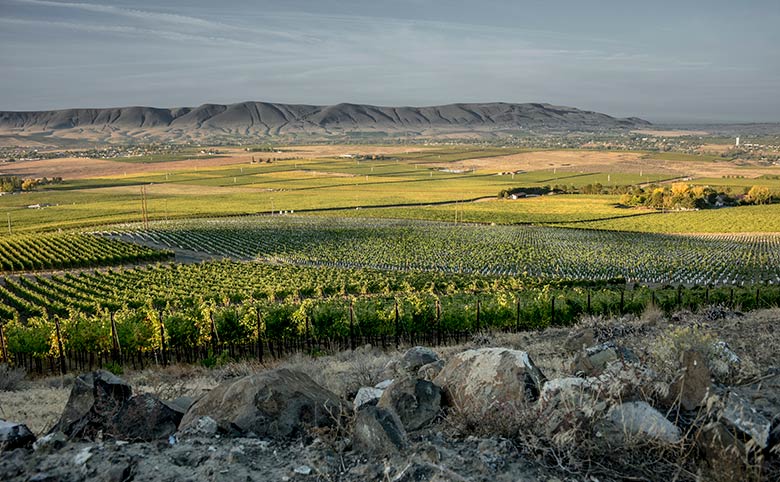
Canvasback’s Longwinds Vineyard is planted to Merlot and Cabernet Sauvignon on Red Mountain, which is the smallest AVA in Washington State with 2,225 planted acres.
Calera
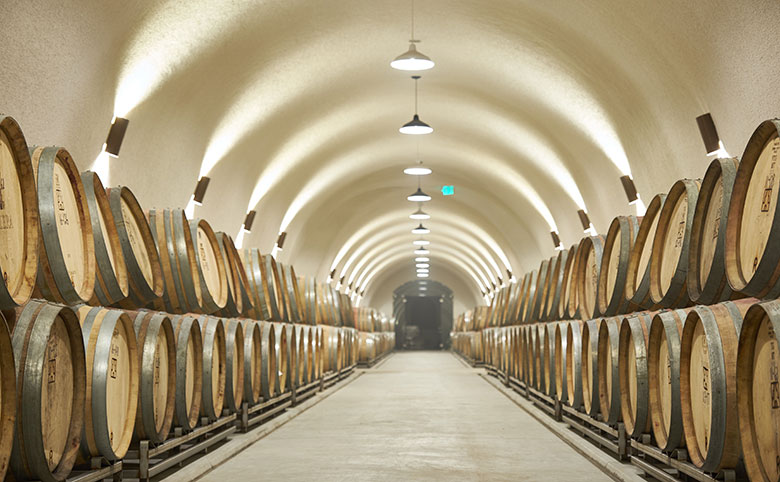
Calera considered a pioneer in new world Pinot Noir! Our gravity-flow winery features and underground wine cave home to barrels of aging Pinot.
A Look Into Washington State Wine
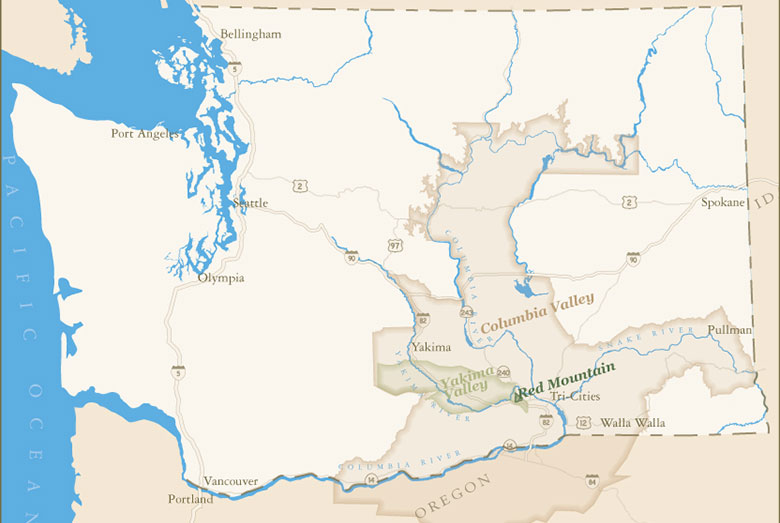
Washington State is the new frontier for luxury Cabernet Sauvignon. As a young and emerging wine region, there have already been eight wines to earn the coveted 100-point score from top wine publications. Let’s dive into what makes Washington perfect for wine growing.
Agriculture has long been a cornerstone for Washington State, with the farming of apples, wheat, potatoes and many other crops. The earliest signs of grape farming originated with traders at Fort Vancouver in 1825, and by the 1860’s, Italian and German immigrants were making wine. Fast forward to the mid 1970’s, when a few pioneers began planting vineyards and commercially crafting wine in Eastern Washington. These folks paved the way for Washington winemaking as we know it. Today, Washington ranks second in wine production in the United States, behind California. There are a number of factors that make Eastern Washington perfect for winegrowing: namely the geography, the geology and the climate.
The Geography:
Many people think of Washington State as the rainy state, which is quite true in Seattle and Western Washington, as storms roll in from the Pacific Ocean. Eastern Washington is a different story. This region sits in the rain shadow of the Cascade Mountains. So, moisture laden storms are blocked by the mountain range, resulting in an arid, desert climate East of the Cascades. At the same time, there are two major rivers that travel through Eastern Washington; the Columbia River and the Snake River which allows for wine growers to easily irrigate their vineyards.
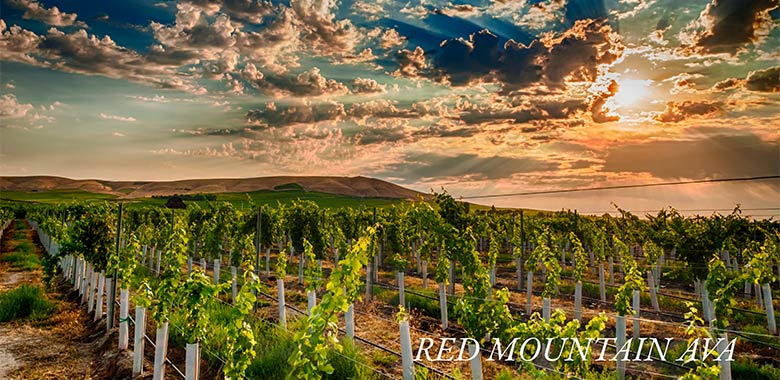
The Climate:
Geography and location are influential factors in climate. Eastern Washington grape growing sits at a latitude of 46˚ N which is the same latitude of Bordeaux, France. At this latitude, the growing season sees an average of 17 hours of sunlight, which is 2 hours more than Napa. In addition, Eastern Washington’s desert climate also experiences extreme diurnal temperatures shifts, with daytime to nighttime temperature swings of 40 degrees. These long and hot daylight hours slowly and evenly ripen the grapes while cool evenings preserve the grapes natural acidity.
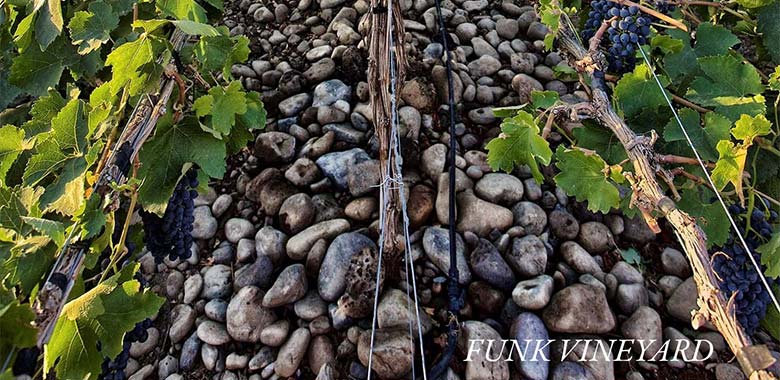
The Geology:
Soil and geology have a significant impact on wine quality. Eastern Washington features some of the most unique soil compositions. During the last ice age, around 15,000 years ago, a large glacial lake in present day Montana, flooded the Pacific Northwest with an 800-foot wave that travelled at speeds upwards of 60 mph. This event, known as the Missoula Floods, and is one of the most significant documented flood events on earth. In its wake, the flood completely changed the native landscape of volcanic rocks and basalt by depositing non-native granitic silt, sands and gravels. This unique soil diversity and excellent soil drainage make the vines work harder thus creating a lower yield and higher quality crop.
The world of Washington wine is young and up-and-coming, earning its place on the main stage of the international wine scene. Since wine is so intimately connected to place, we are taking a side-by-side look at two of our major Eastern Washington appellations.
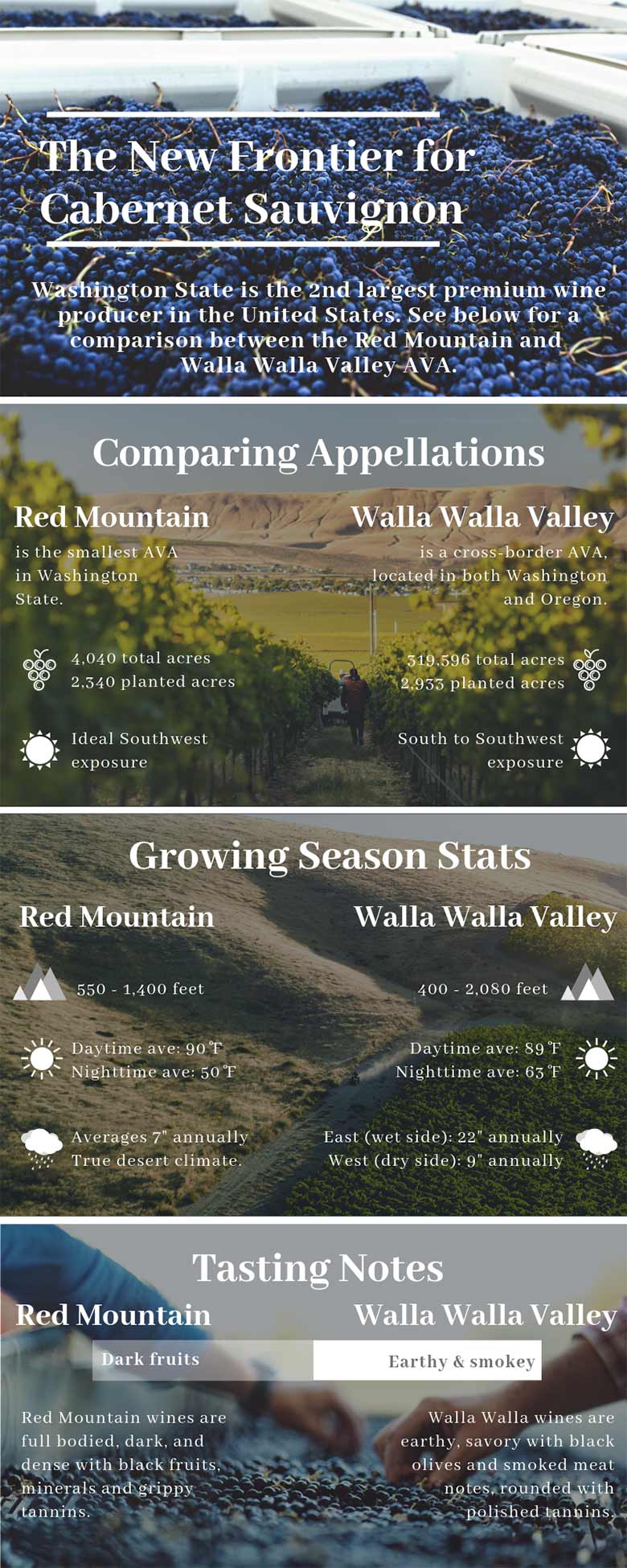
How to Taste Wine
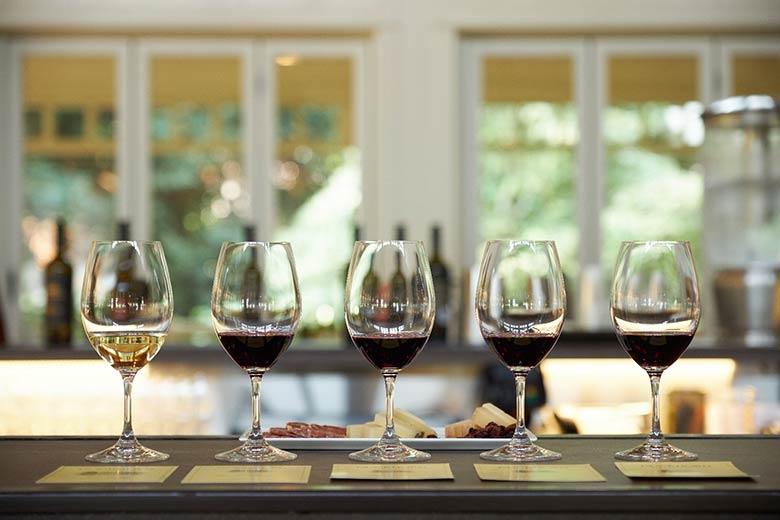
Wine tasting is an exploration of geography, variety and the winemaking style. There is no better way to expand your wine palate than to taste more wine! So, try hosting an at-home wine tasting with a group of friends or visit wine country and begin exploring your taste preferences!
HOW TO TASTE -
The experience of tasting wine is a journey of your senses. There is no right or wrong way to taste, it is an experience that incorporates sight, smell, and taste.
Sight
Wine is visual! Tasting starts with sight and an examination of the wines color, opacity and viscosity. The color and opacity gives you insights to the varietal and its age. Red wine with age has an orange tint around the edges, while white wine evolves with tints of gold and brown. The wine viscosity is an excellent indicator of the body and sugar content.
Smell
Swirling wine pulls oxygen into the glass which helps to awaken the hundreds of aromas in the wine. These aromas give you insights into the grape varietal, the growing region and even the winemaking process. Aromas can be categorized by fruit, flowers, herbs, spices, nuttiness and more.
Taste
At last, we are ready to taste the wine! Start off with a sip and swish of the wine around your mouth. Our tongues taste through five flavor categorizations: they are salt, sour, sweet, bitter and umami. Grapes have natural sugar and acid, which we can taste in the finished wine. In addition, the barrel cooperage gives off a bitter or astringent component.
Mouthfeel is a critical factor of taste and there are numerous wine components that influence mouthfeel: tannin, acidity, sweetness, alcohol and body. These compounds create a reaction. For instance, tannin is bitter and astringent with a mouth-drying component. On the opposite spectrum is acidity, which contributes a tartness or tingling sensation that makes your mouth water. Sweetness can be a measure of the residual sugar, but high tannin and high acidity can mask sweetness. Alcohol can be sensed as heat toward the back of our throats. The body of a wine is measured by its weight and range of watery to thick.
Wine also has a time component. There is a taste journey or timeline, in which the tasting experience has a beginning, middle (mid-palate) and end (finish). In this time frame, the wine aromas and flavors change as they travel from your first sip, to the mid-palate and finish.
Evaluation
Lastly, ask yourself how the wine tasted? Was it balanced, youthful, fruit forward, complex?
The most important question of all, is if you liked it? What do you taste? Are there new fruit flavors that present themselves separate from what’s on the nose? Is the fruit bright and refreshing or subtle? Is the texture and mouthfeel intense, sharp, silky, smooth, lush or creamy? Is the presence of oak apparent in the form of tobacco, vanilla, black tea, coffee?
At the end of the day, wine tasting is a meant to be fun! It’s a personal experience and exploration of what aromas and flavors speak to you. So, we suggest grabbing some friends and diving into the tasting experience!
Holiday Gifts for Wine Lovers
What are the perfect gifts for wine enthusiasts? We are bringing you a few of our favorite wine accessories, wine themed gifts and technology and wine experiences to help guide your holiday shopping.
Menagerie Aerator Pourers
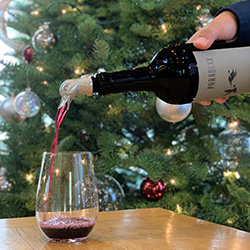
A wine aerator is a must have accessory for any wine lover! Aerator’s are devices that enable oxygen to interact with the wine in an effort to ‘awaken the aromas'. These devices are especially handy when you do not have one-to-two hours to decant your wine ,but want to soften the tannins and/or awaken the fruit aromas. Menagerie aerators are forged from high grade stainless steel, are dishwasher safe and offer over 100 different animal-themed styles! We are partial to the duck aerator!
West Wine Tours

Wine tasting is all about the experience. The crew at West Wine Tours is taking that experience to a new level. These guys will take you on the quintessential Napa Valley tasting tour in a classic VW bus. Their day-long tour includes stops at three Napa Valley wineries for tastings as well as a delicious lunch. Tours start at $125 per person with their VW bus capacity ranging from 6 people to 8.
Riedel Decanter
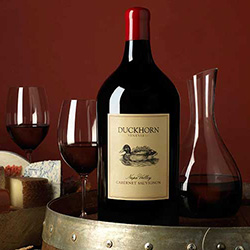
A decanter is a must-have item for any wine lover and an exquisite gift item. We decant older wines to remove the sediment and we decant younger wines to awaken their aromas. In addition, there is a charm and grace associated with the use of a decanter, thus enhancing the wine experience. Riedel crafts a range of decanters in with both elegant and playful designs making it a perfect gift for the wine lover in your life. Read more about decanting here: To Decant or Not to Decant
Coravin Wine System
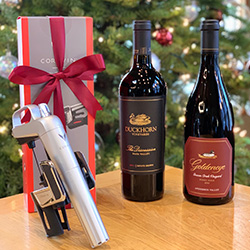
This innovative gadget siphons wine from the bottle without removing the cork and spoiling an entire bottle from oxidation. Coravin technology enables consumers to drink a glass today, lay down the bottle and pour another glass months or even years later, while keeping the wine fresh!
This is the perfect gift for those who want to test wines in their cellar or for those who just don’t want to finish a bottle.
Duckhorn Portfolio Holiday Wine Gifts
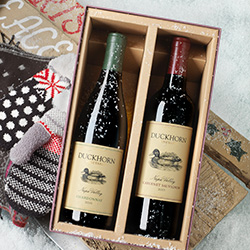
With a total of 8 brands under our Duckhorn Portfolio umbrella, we have the perfect wine for every palate. Our small lot and single vineyards wines help curate a full selection of wine gift packs ready for giving. Our wine gift sets can only be purchased directly from our winery. So, whether you are shopping for a Merlot lover, a Cabernet Connoisseur or Pinot Noir aficionado, we have hand-selected luxury red and white wine offerings to please every palate!
Cheers and happy holiday shopping! Check out our online gift shop.
Paraduxx Spotlight
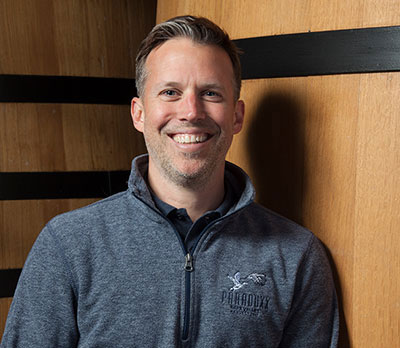
2018 is a special vintage for Paraduxx as it commemorates our 25th harvest! So, we sat down with winemaker Don LaBorde to chat about our 25-year history, evolution and inspiration from the great blends of the world.
Can you walk us through Paraduxx’s origin and evolution?
Dan Duckhorn was truly intrigued with the Super-Tuscans (Sangiovese) and Vega-Sicilia’s (Tempranillo) coming out of Italy and Spain. He appreciated how these regions began blending their native varietals with a Bordeaux grape and effectively pioneered a new winemaking style. “Dan’s thinking was let’s create our own new category,” using what could be called California’s closest thing to a native grape, Zinfandel blended with Cabernet Sauvignon. In, 1994 we released our inaugural vintage, which blended Cabernet Sauvignon, Zinfandel, Merlot and Petite Sirah.
How would you describe our series of wines today?
Today, our line-up of Paraduxx wines are inspired by the iconic blends of the world – as originally imagined by Dan Duckhorn. “So, we actually make a Super-Tuscan style Sangiovese-Cabernet blend (Atlas Peak) and we have a Tempranillo-Cabernet blend crafted in the classic Vega-Sicilia style (Ridgeline). We found that Howell Mountain has beautiful Syrah, so we have crafted a Penfolds Grange style Cabernet-Syrah blend paying homage to new world style wine.”
What makes the Paraduxx Style unique?
Paraduxx is the only Napa Valley winery dedicated to crafting blends inspired by the iconic blends of the world, with a Napa twist. “We make a ripe, bold style of red wine and a very bright and acidic style of white wine. So, we pick the whites fairly early with high acid levels, no oak or malolactic fermentation, we like to keep them crisp, bright and light-bodied with intense aromas and a sharp palate. In the reds we like to have ripe, darker fruit characters. Oak is there, but mostly in the background, we use only 40-60% oak. Our set of wines is unique, we don’t have to follow all the varietal rules, we can be playful with our creative winemaking and blending the best wine possible.”
How is the 25th Harvest turning out?
“At Paraduxx, we are a month late! The quality is there, the crop is above average, which is probably why it is a little late too, it’s taking awhile to ripen up. The weather has been cool, and we’ve had one rain event; overall we have really nice flavor development in the grape.” In comparison to last year, we had numerous heat spikes early in the harvest season, but this vintage and 25th Harvest we are seeing slow and even ripening, so far everything tastes amazing.
We celebrated with our storied 25th Harvest with our annual Harvest Party uncorking the release of the pinnacle of our portfolio, the 2015 Paraduxx Napa Valley X2.
Lifecycle of a Grape Vine
Every bottle of wine has a story to tell, and that story begins in the vineyard. With each vintage, the unique interaction between terroir, climate, and weather dictate the narrative of each bottle. So, in this blog we will examine the lifecycle of the grape vine, the ultimate wine author.
Bud Break
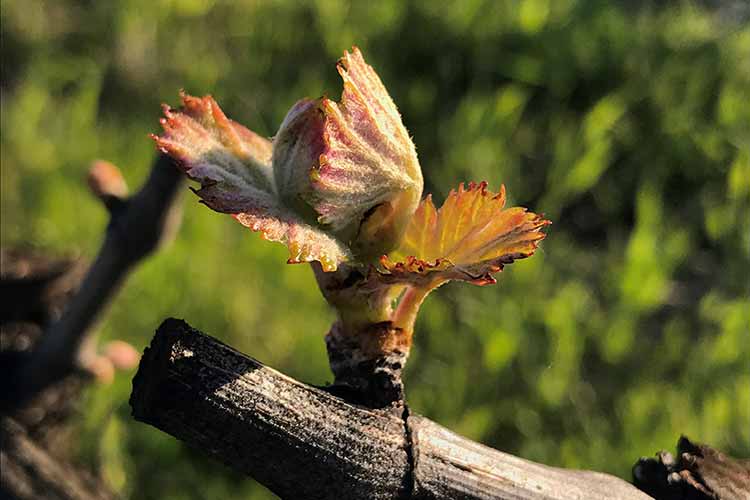
Come spring the vines reawaken from dormancy. From March to April the vines experience bud burst. From these buds, green leaves burst awake in preparation for photosynthesis with the warmer months. Bud break is a delicate time, as the new growth is in danger of spring frost and hail storms.
Flowering
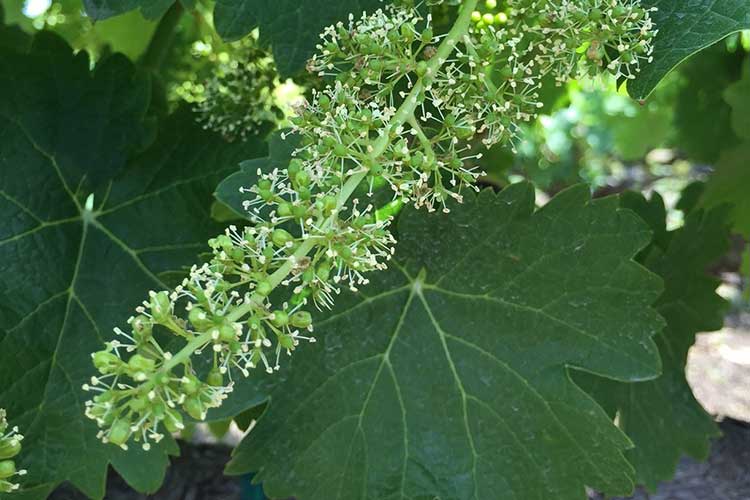
As bud break turns into vegetative growth, the next process of the grape vine begins from April to May. Flowering is when bunches of tiny flowers bloom from the new vine shoots. Grape vines are self-pollinating, so each of these flowers has the potential to turn into a single berry.
Fruit Set
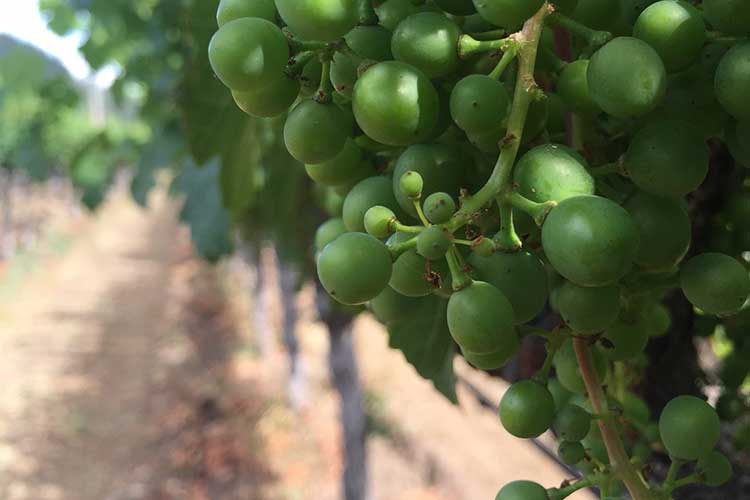
As the summer months set in, the pollinated flower drops its petals and tiny green grape berry clusters with seeds develop at the end of the stem. Although, not every flower is fertilized into a berry, so it simply falls off the vine. The fruit set stage of the grape vine is critical, as it becomes the initial indicator of the potential crop yield in harvest.
Veraison
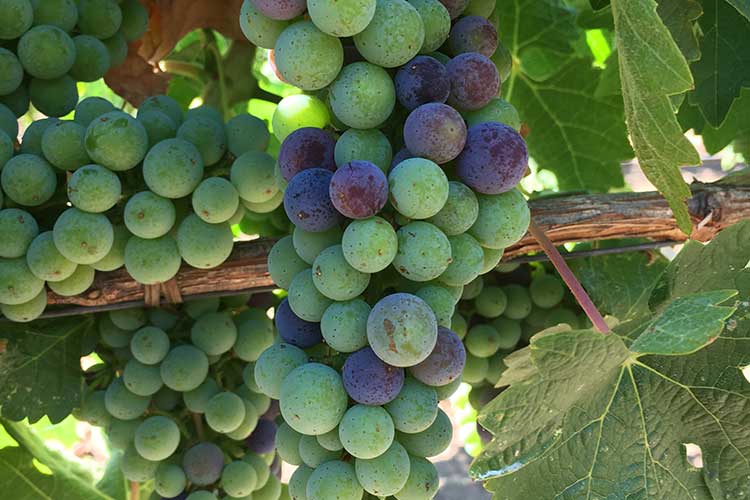
Come mid-summer, the green berry clusters begin to expose their color pigmentation. Verasion is the process in which the berry clusters begin ripening and turning purple or blueish in color. The heat of summer induces sugar development and ripening in each grape, while the cool evenings (depending on growing region) preserve natural acidity and freshness.
Harvest
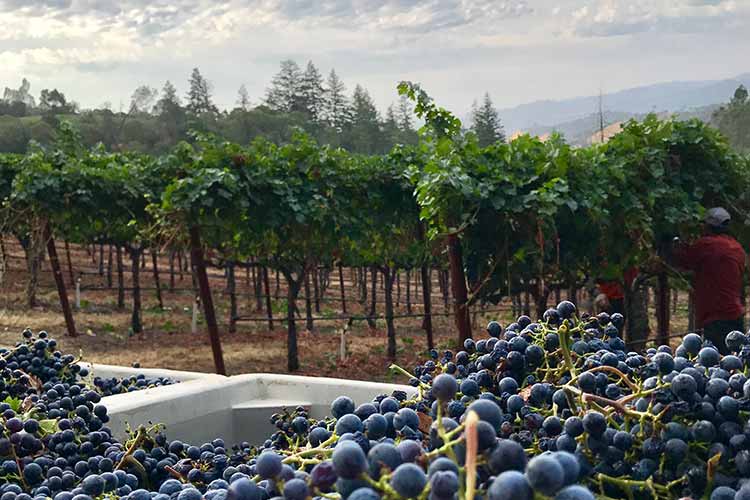
From September to November, for winemakers, viticulturists and wine country visitors, this is the most exciting time of the wine growing season! There is a palpable buzz and energy as winemakers’ taste, test, and measure brix, or sugar content, and determine when the grapes are ready to be picked. Harvest is when the grapes have reached optimal ripeness and are ready to tell the story of the vintage.
Dormancy
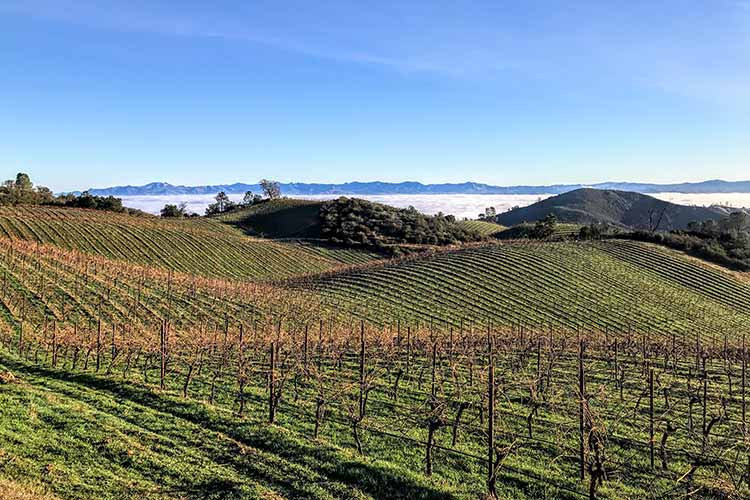
After the seasons fruit has been collected during harvest, all fall leaf foliage falls to the soils and the vines go dormant. During this time, viticulturists are diligently pruning each vine in an effort to guide vine growth for next season. After four months of rest, the grape vine repeats this process effectively growing and telling the story of another season.
Harvest is the best season to visit wine country! The vines are lush with green foliage and plush purple grape clusters create the most picturesque visit. Our annual Paraduxx X2 Release Harvest Party took place on Saturday, September 29th! If you missed the festivities you can still book your fall reservation at Paraduxx, Duckhorn Vineyards, Goldeneye and Calera today!
How to Enjoy Large-Format Wine Bottles
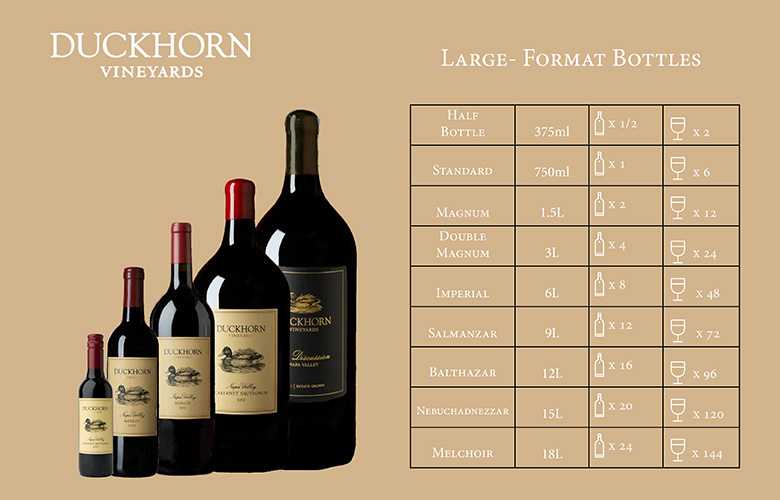
Uncorking a large-format wine bottle is exciting and ceremonious! These bottles are rare in comparison to the standardized 750ml bottles, and they make for a practical investment. Large-format bottles are perfect for your cellar as they age more gracefully and make for impressive centerpieces during special gatherings. In this blog we are going to explore the evolution and benefits of large format wine bottles.
The Evolution of Wine bottles
It is believed that the ancient Romans, used glass blowing to create wine bottles. Yet, this glass was too delicate to store the wine, so they used amphoras, large clay pots, for wine transport and storage. The glass bottles they created were typically used as a decanter for dinners. In the 1700’s, coal-burning furnaces allowed for higher heat and allowed glass blowers to create thicker and darker glass. The production of the cork closure came shortly after and with that changes in wine bottle shape and size began to take form. It was discovered that the larger the bottle, the slower and more gracefully it ages. In, 1979, the United States deemed the 750ml the standardized wine bottle size, and the European Union followed suit, in order to ease trade.
Collecting Large-Formats for your Cellar
Large-format wine bottles make the perfect addition to your cellar due to their age-ability. The aging and oxidation process in a large-format bottle occurs more slowly, than the standardized 750ml, creating a wine with an enhanced flavor profile. With age the tannins soften, and the wine begins to express secondary and tertiary aromas creating a more complex wine.
So, the larger the bottle, the more age-ability. This is because the ullage, or oxygen sealed in each bottle of wine is the same despite differing bottle sizes. With larger formats, there is a larger volume of liquid interacting with that oxygen. In addition, large-formats are more resistant to drastic temperature variations and light damage due to the higher volume of liquid. For those interested in making practical wine investments, large-format bottles are your best option for cellaring and aging.
Celebrating with a Large-Format
Social gatherings are the perfect occasion for uncorking a large-format! Whether it’s for a holiday dinner, a family get-together, wedding or graduation, a large-format is sure to impress. Opening large-formats can take a little practice. So, we assembled a few suggestions:
- Carefully, cut the wax off a large-format same as you would on a standard bottle with foil. Your cork screw knife should work great or even a serrated knife. Peel away the wax and be careful not to get any in the bottle.
- If you are opening an older vintage wine, the ah-so wine opener is perfect solution. Vintage corks are delicate and the last thing you want is to destroy your large-formats cork. We suggest adding a neutral oil to the prongs to easily glide into the bottle neck and be cautious not to push the cork in. Simply twist and pull to cleanly extract the cork.
- Once, you have uncorked your large-format, wipe away any sediment in the neck and decant your wine. Pouring from a large-format can be cumbersome, so the decanter is great way to ceremoniously present the wine while allowing the sediment to sit in the bottle and not your glass while at-the-same-time aerating the wine.
Within the Duckhorn Portfolio, we offer a selection of magnums and double-magnums for your next celebration or cellar. Shop online here and enjoy!
The Story Behind Duckhorn Portfolio’s Pinnacle Wines
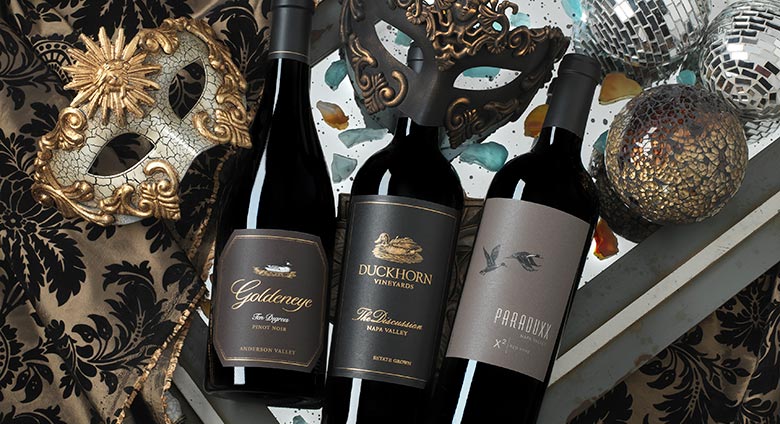
Forty years ago, Dan and Margaret Duckhorn along with their winemaker had a passionate discussion at the dinner table about making a cuvée, or the finest red blend. Instead, they chose to focus on varietal wines, yet Duckhorn Vineyards had remained intrigued by the artful blend of a cuvée. In 2006, that dinner discussion from 30 years ago came to fruition; Duckhorn Vineyards released their first cuvée or pinnacle wine aptly named, The Discussion.
Today, within the Duckhorn Portfolio, there are four Pinnacle wine offerings from four of our seven wineries, Duckhorn Vineyards, Paraduxx, Goldeneye and Canvasback. These wines are 100% estate grown and celebrate our best blocks from our top estate vineyards.
Our four pinnacle wines are distinctly different and capture the essence of each winery and region. The Discussion from Duckhorn Vineyards is classic and elegant embodying the best of Napa Valley Bordeaux varietals. Paraduxx X2 stylishly blends mountain fruit and valley floor fruit, beautifully demonstrating the subtle art of the blend. Our pinnacle Pinot Noir, Ten Degrees, from Goldeneye is complex, earthy and rustic, perfectly capturing the natural intensity of Anderson Valley. The Grand Passage is concentrated and complex, beautifully embodying the desert-like climate of Red Mountain in Washington State. All four of these wines are ready to drink now and ideal for aging in your cellar for 10 to 15 years.
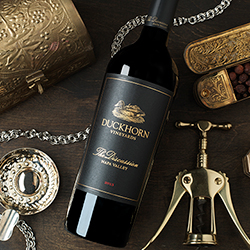 Duckhorn Vineyards The Discussion
Duckhorn Vineyards The Discussion
The Discussion commemorates a longstanding dream of Dan and Margaret Duckhorn’s. The primary blend is always Merlot and Cabernet Sauvignon, representing our belief in the timeless union of these two noble Bordeaux varietals. The Discussion embodies the depth and complexity of Duckhorn Vineyards renowned estate program, resulting in an elegant wine with pure fruit flavors combined with silky tannins and savory notes.
92 Points - Wine & Spirits
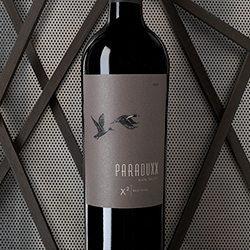 Paraduxx X2
Paraduxx X2
X2 is crafted as an exponential expression and harmonization of our Paraduxx style and the pinnacle of our portfolio. Paraduxx X2 is a blend of our best blocks and barrels selected from our finest estate grown Cabernet Sauvignon and Zinfandel producing a wine that balances depth and structure of mountain grapes with the lush vibrancy of valley floor fruit.
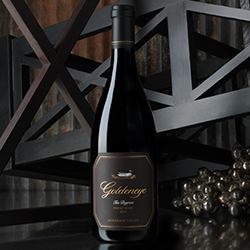 Goldeneye Ten Degrees
Goldeneye Ten Degrees
Made from our ten finest barrels of Pinot Noir, we name this special wine Ten Degrees – a name that pays homage to the fact that our three estate vineyards in Anderson Valley display as much as a 10 degree temperature variance, while spanning only an eight-mile distance. As the pinnacle wine of our portfolio, Ten Degrees combines our best estate vineyard grapes and showcases the elegance, beauty and rustic characteristics of the Anderson Valley.
94 Points - Wine Enthusiast
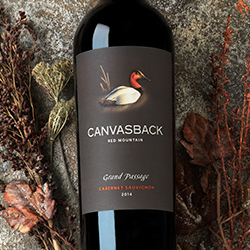 Canvasback Grand Passage
Canvasback Grand Passage
With access to some of the best vineyards in Red Mountain, Canvasback was able to craft Grand Passage, the pinnacle of our winemaking program. The Grand Passage is 80% Cabernet Sauvignon and 20% Merlot, it embodies the finest blocks and barrels of each vintage to create a beautifully layered wine with ripe voluminous dark fruits rounded with notes of mocha and salted caramel and polished tannins. This is a Cabernet lovers’ prefect wine!
93 Points - Wine & Spirits
Chatting with Decoy Winemaker, Tyson Wolf
Each harvest season is a blank canvas and the winemaker is given the opportunity to paint the perfect vintage! As Decoy begins its twenty-second harvest, I sat down with Winemaker Tyson Wolf to discuss the 2017 vintage.
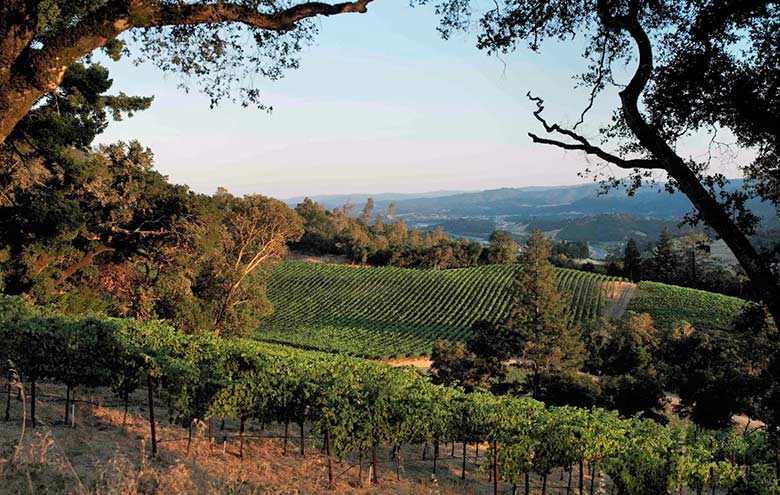
With the heavy rains this year, the question on everyone’s mind is how is the vintage looking? Our winemaker says the grapes are superb, with his first pick being of Sauvignon Blanc from the Alexander Valley. Fortunately, August has seen consistently warm weather which is balancing out the moisture brought on by California’s out-of-character rainy season. The excitement of Harvest is visible throughout Sonoma wine country!
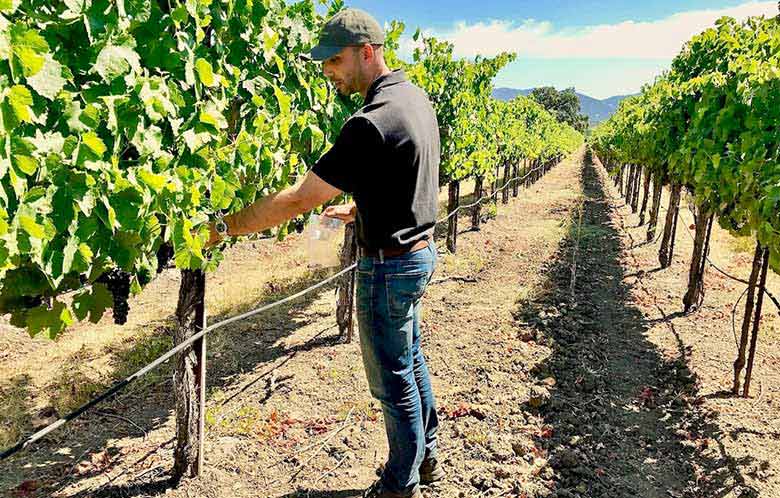
Harvest is a culmination of the year’s climate and local geology, bearing fruit that is evocative of a place. According to Tyson, Harvest is the most important part of the winemaking process, setting a tone for the entire year of winemaking. It all starts with picking the grapes! Knowing when to pick each block of grapes is a skill. For Tyson, grape picking involves an analysis of not just the grapes chemistry but also of its flavor profile as well as an evaluation of how the flavor will continue to develop. It involves having the foresight to taste a single grape and understand how that grape will translate to the finished product, in the bottle!
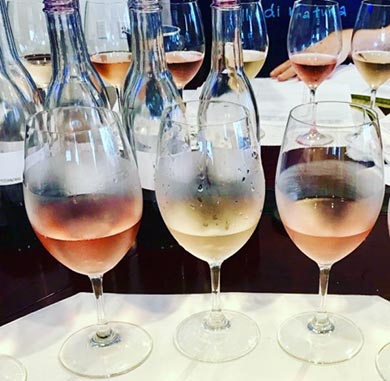
Tyson's personal challenge every year is to make each vintage better. He and his team frequently taste the past two vintages and decide how to tweak the wines to achieve the ideal translation of the given varietal. For instance, Tyson is most excited to play with the second vintage of Decoy Rosé and add more Syrah to create a brighter, crisp Rosé with exotic fruit notes. From the picking of the grape, to the blend and barrel regime, winemaking most certainly is a labor of love.
Decoy wines aim to translate a sense of place, transporting the wine taster to Sonoma County and imparting a tasting experience that is much more than just the fruit, oak, and spice. Tyson says part of the fun of growing and making wines in Sonoma County is the diversity of climates. The Pacific Ocean offers a marine influence with cool coastal winds and morning fog while another microclimate exists that is warm, dry and mountainous. Sonoma County is unique in that it is able to communicate a variety of terroirs!
Cheers to the 2017 vintage and to a successful Harvest!
